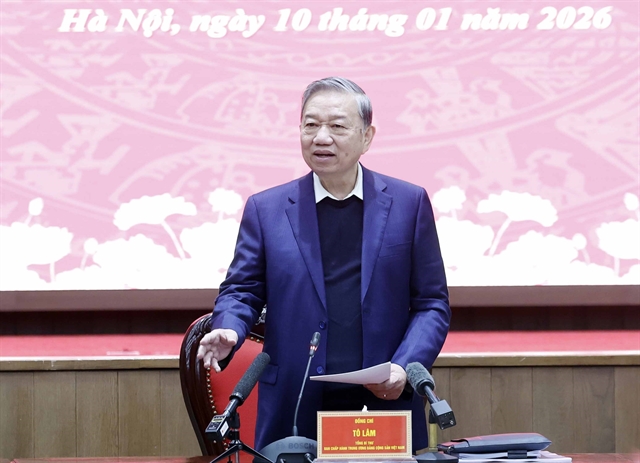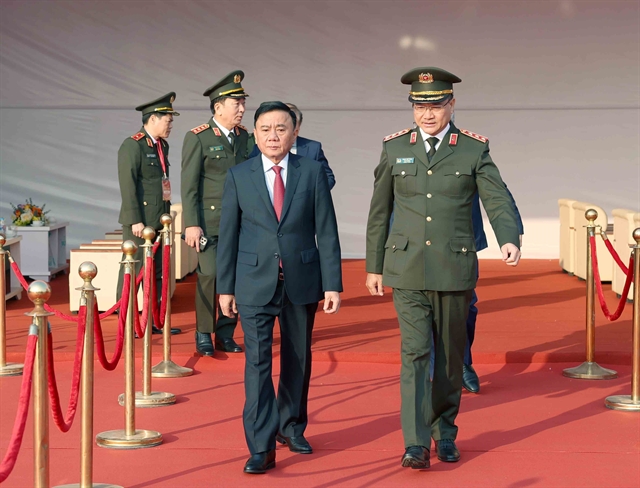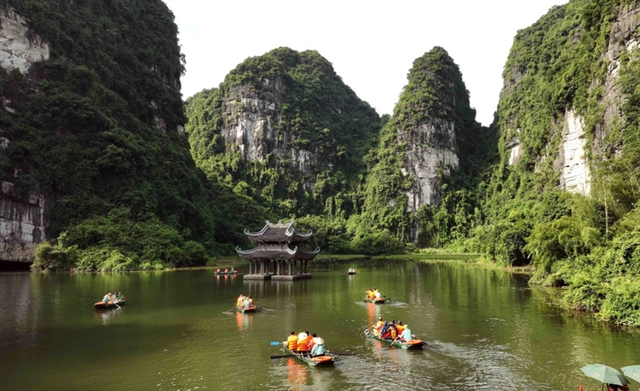 Travel
Travel

Dunhuang, a city in China’s north-western Gansu Province described as an oasis in the Gobi desert, is emerging as an international cultural "melting pot" because of its famous ancient Buddhist cave temples, the Mogao caves.
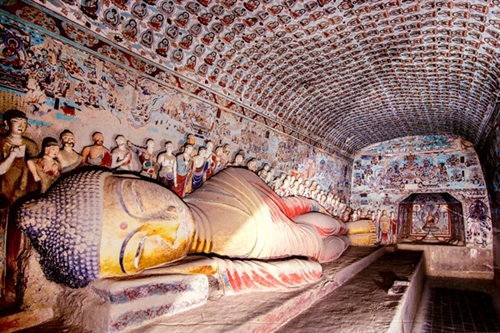 |
| At rest: One of the Budhhist statues in the Mogao Caves.— VNS File photo |
Mai Khuyên
The sun dazzles brilliantly all day over indulgent sand dunes stretching towards the horizon while tourist pilgrims riding on camels move smoothly with their shadows on a small sandy path.
This was the incredible attractive facet of the Gobi desert attributed to the honest and introvert people of Dunhuang, a city in China’s north-western Gansu Province, which is now hastening the revival of the Silk Road.
Holding a particularly important position on the ancient road and described as an oasis in the Gobi desert, the city used to welcome foreign merchants and monks from the West as well as officials and soldiers from central China to bring their own cultures to and make it a trading centre and a cultural "melting pot".
The economic, military, political and cultural activities which took place at this crossroad provided the basis for the flourishing of one of China’s earliest Buddhist centres.
Most Buddhist monks came to China from India and Central Asia by way of the Silk Road. Foreign monks and their Chinese disciples formed the earliest Buddhist communities at Dunhuang in the late 3rd and early 4th centuries.
Dunhuang today remains a thriving town surrounded by fields of cotton and maize. Green energy with solar power plants has emerged as the potential for the city to help cut pollution, reduce water consumption and boost social economic development of China.
And it is also a famous tourist destination.
This is because of the painted and decorated Buddhist cave temples 25km southeast of the town, the Mogao caves.
The Mogao cave temples were made between AD 400 and 1200 by Buddhist believers, including officials, soldiers, merchants, and monks, in addition to nuns, travellers and the ordinary men and women of Dunhuang. At that time, Buddhism was the main religion of Dunhuang and China.
The message of Buddhism had been brought by monks and other travellers from India and the original Buddhist texts were in Indian languages written on leaves from palm trees which grew in northern India.
Some of these were brought to the city by monks over 1,500 years ago and were kept in a special library at the Buddhist caves.
A legend tells the story of the first monk at Dunhuang –monk Yuezun – who was far away from home. His family was in central China but he had left them to become a Buddhist monk, seeking enlightenment, and had travelled over a thousand miles west to the remote area of Gansu. One day when wandering in the desert southeast of Dunhuang, he had a vision of a golden light emitted from Mount Sanwei as if a thousand Buddhas were glowing.
He thought it was a message from the Buddha to make a shrine here, and so he dug a small cave from the cliff in order to meditate on his vision and a statue of the Buddha to pray to.
Soon words spread and other monks joined him and dug their own caves for prayer, rest and meditation. Others paid for more elaborate temple caves, hiring artists to paint the walls with beautiful images of Buddhism and sculptors to make statues of the Buddha and his disciples.
Today almost 500 caves survive and the site is famous throughout the world. It is one of the world’s greatest art galleries.
Fast growing economy
With a strategic goal to recover the world’s trade journey between the east and west and to lay out an extensive vision for close relations with dozens of countries that were loosely connected along the Silk Road more than 1,000 years ago, the Chinese government is pouring billions of dollars into Gansu Province and has chosen Dunhuang as one of the key targets of the nation’s Belt and Road Initiative.
Though it is still a controversial plan that has caused geopolitical scepticism among both, westerners and those traders from the East that they could increasingly become too dependent on China, the strategy has obviously breathed a new life to this desert city.
Dunhuang welcomed an explosive GDP growth in recent years thanks to its outstanding success in tourism development.
With a total population of more than 180,000 but only a minor 28,000 officially working in tourism industry, Dunhuang last year welcomed 6.6 million tourists and is expected to receive about 8 million this year – more than 40 times the number of the local population, the city’s Tourism Department reports.
Dunhuang deputy mayor, Wang Xiaoling, said that in the past five years, the city’s GDP increased about two folds to 11.5 billion yuan, or about $1.8 billion, in which the culture tourism contributed approximately 60 per cent.
Last year alone, total investment in Dunhuang assets reached 19 billion yuan ($2.9 billion), said the official.
Dunhuang, along with 29 other cities of China, has entered the list of tourism destinations that build qualified international characteristics, according to China’s National Tourism Administration.
Dunhuang is the only city in Gansu on the list. Entering the list provides more opportunities for Dunhuang city, according to the authority.
As it will hold the First Silk Road (Dunhuang) International Cultural Expo, the city is expected to promote tourism, comprehensive service and its brand recognition by focussing on tourism content and advanced regional collaboration.
International Cultural Expo
Dunhuang has embarked on preparations for an international cultural event since 2013, with the aim of promoting a cultural exchange, laying the foundation for the dynamic trade and economic co-operation between countries.
To prepare for the event, the first Silk Road International Culture Expo (SRICE) scheduled to take place in September this year, the city is in a hurry to complete building a large international expo complex centre with a total investment of 1.6 billion yuan (roughly $245 million).
The complex includes a 126,000 square-metre large exhibition centre, a conference centre with a capacity to accommodate 3,000 people and a theatre for 1,200 viewers.
Inspired by the spirit long formed through exchanges on the Silk Road, the city authority expects that through the festival, cultural communication, co-operation and development can be enhanced.
Moreover, the expo is being held with the goal to advocate absorbing the best from other civilisations, and to promote mutual understanding among residents, the deputy mayor said.
SRICE (Dunhuang) will become a professional and international cultural expo, and serve as an important platform for cultural exchange and economic development, said the official. – VNS
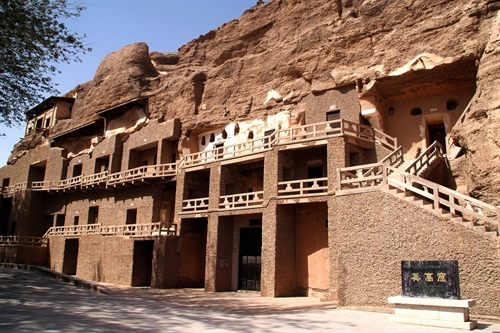 |
| Temple complex: The view from outside the Mogao Caves. - VNS Photo Hải Hà |
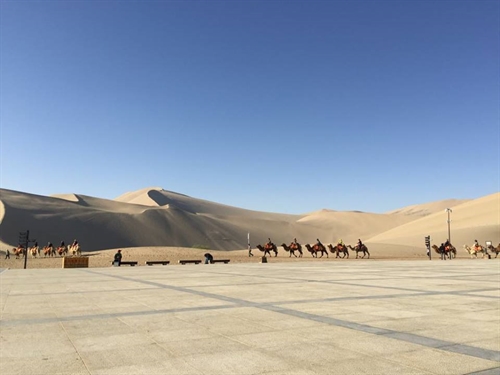 |
| Pilgrimage: Tourists ride camels single file into the desert. - VNS Photo Kiều Oanh |
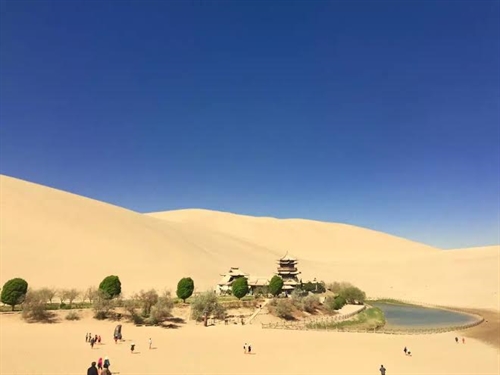 |
| Oasis: The amazing Crescent Lake in the Gobi desert. - VNS Photo Hải Hà |
 |
| Nine-storey temple: Another Mogao Caves tourist attraction. VNS file photo |

